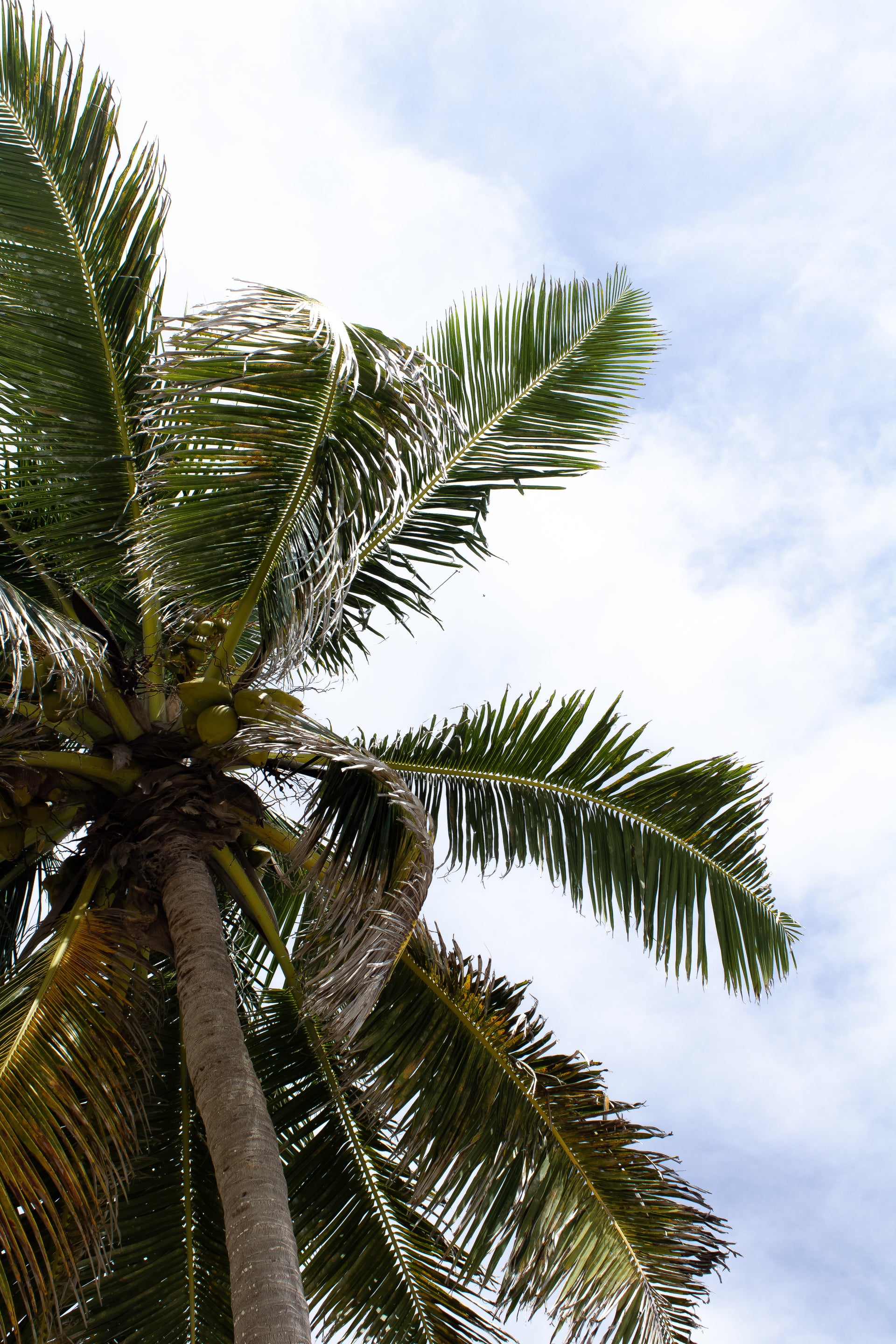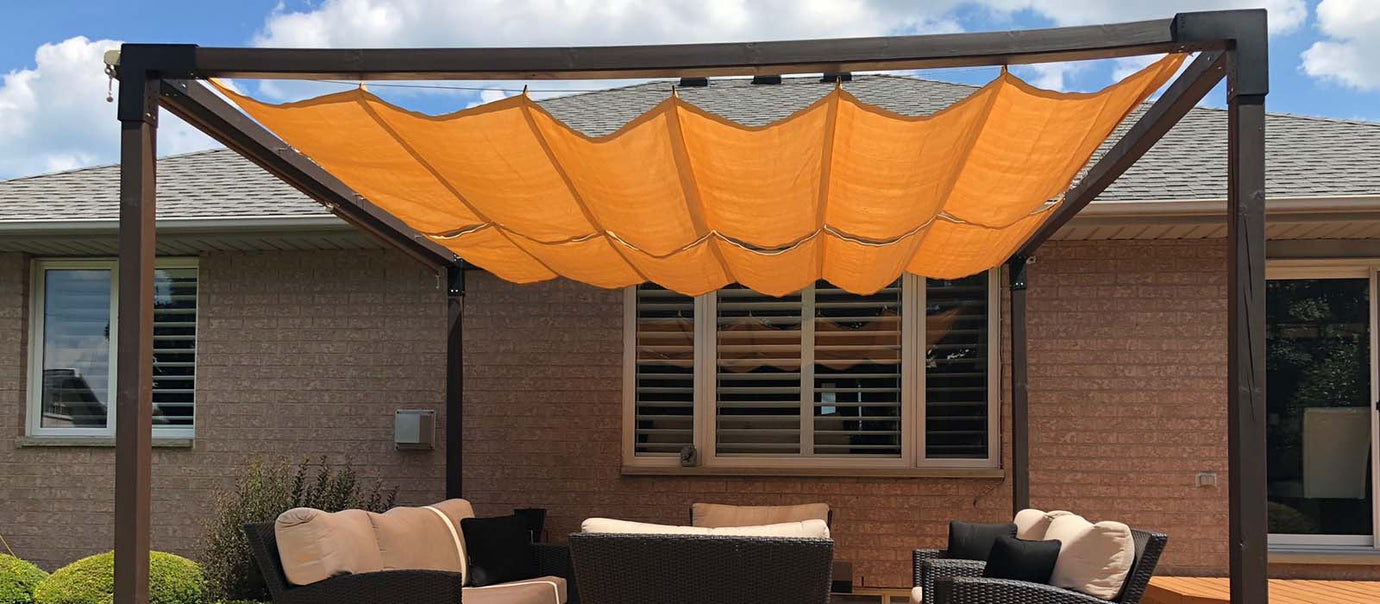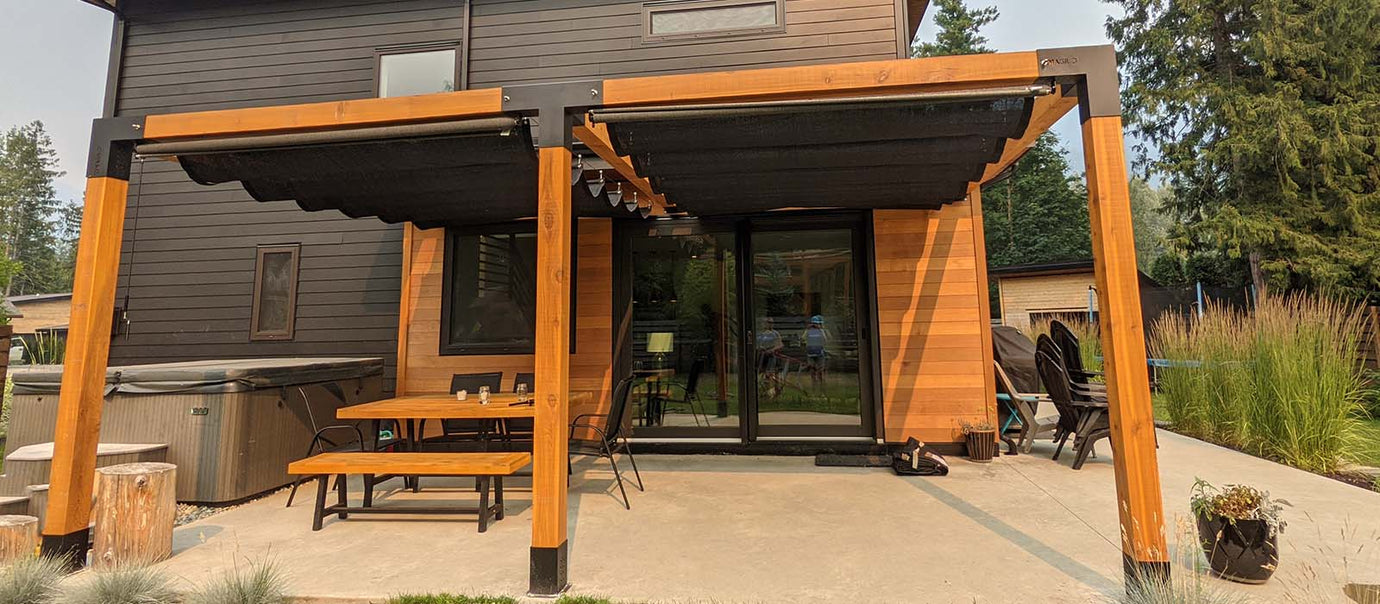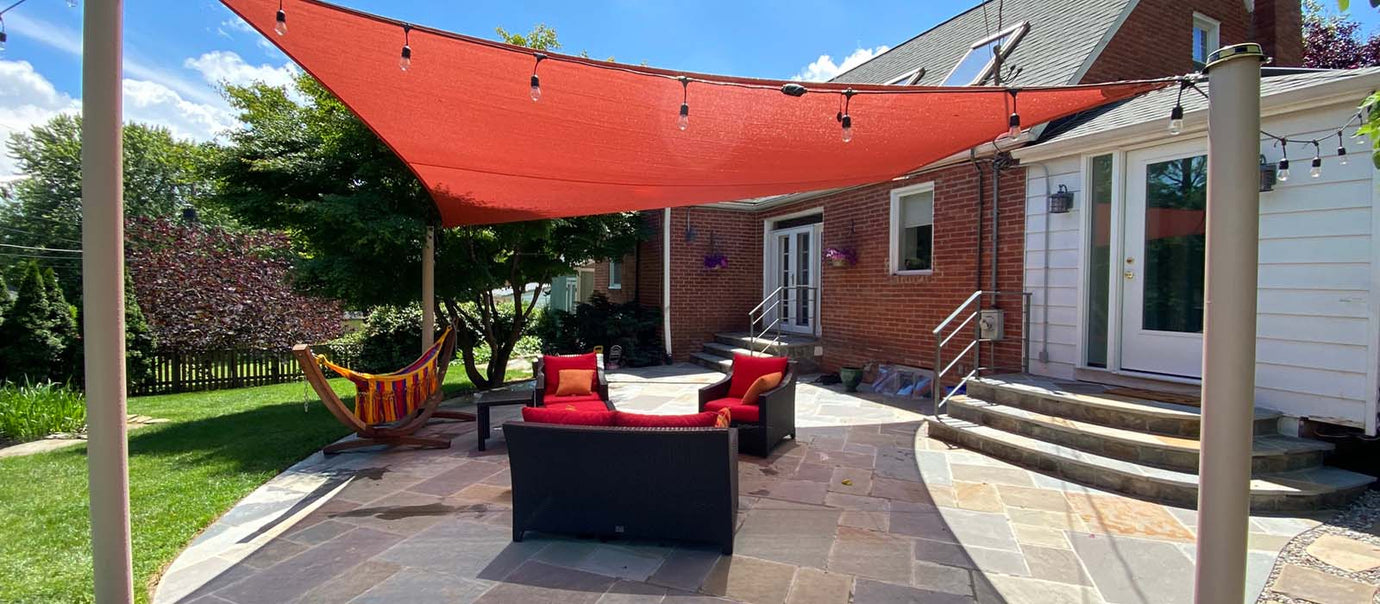Our YouTube channel includes detailed installation guides, frequently asked questions, product overviews and lots more. We are always open to content ideas so please let us know if there is a topic you would like us to cover.
Where Can I Attach A Shade Sail To?
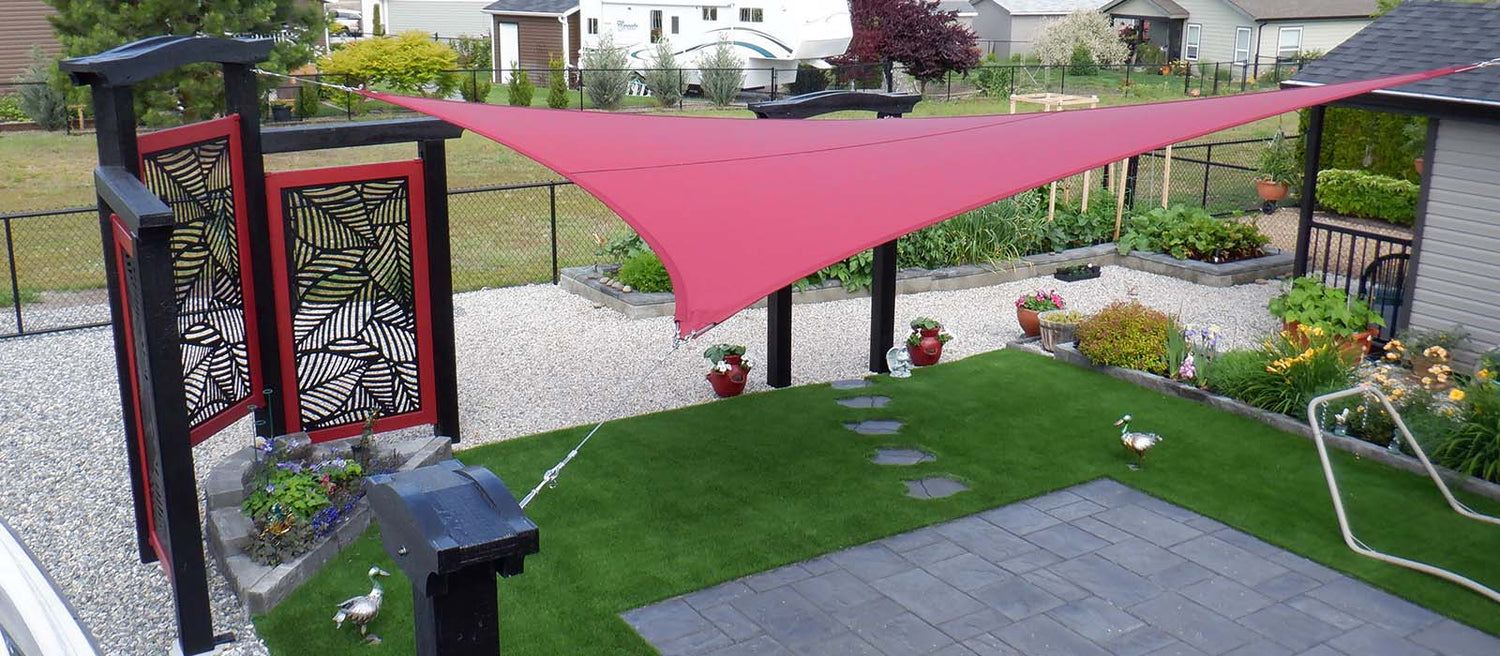
When shading any space, the first thing you will need to figure out is where it is possible to attach your shade sail to, we refer to these positions as anchor points. Ensuring your anchor points are substantial and able to bear the load required to correctly tension a shade sail is absolutely essential; when a shade sail is not tensioned properly, it will lack its aesthetic quality, will not perform well in inclement weather conditions, and can lead to damage and a reduction in the life of your shade sail. There are three main categories of anchor points: existing structures, posts and frames.
Custom vs Standard
When it comes to choosing between a custom and a standard shade sail, the decision can significantly impact your installation process and the final result. With standard shade sails, the location of anchor points is less flexible. Typically, you would select a standard sail, wait for its arrival, and then determine the best anchoring locations within your space. On the other hand, custom shade sails offer the freedom to first identify the most secure and strategically shaded anchor points. Once these are determined, precise measurements can be taken, allowing for a shade sail tailored specifically to your needs. This approach not only maximizes shade coverage but also ensures a more secure installation.
Existing Structure
This is one of the most common anchor points and can include the side of your house, a support beam, a standalone wall and many other locations. As mentioned previously, it is essential to ensure the location of where you are attaching to is substantial. If you are using a screw eye, for example, you will need to make sure you are screwing into more than just a facade (both brick facade or wooden siding are both good examples of surfaces that are not sufficient enough to support the tension of a shade sail), somewhere behind this facade will be solid wood or brick, which will hold the anchor in place instead of the anchor point tearing out as soon as you tension the shade sail. If in doubt, contact us, we’re here to help.

Common Hardware for Existing Structures
Diagonal Wall Plate
A diagonal wall plate can be used when attaching to any flat surface and is held in position by 4 wood lags. The most common uses for diagonal wall plates are on the side of your house, however, you could use this on any flat substantial surface.
External Corner Bracket
An external corner bracket wraps around the corner of two adjoining surfaces and is also held in place with four wood lags. The most common use is the corner of a house but this could also be used to attach to the corner of a beam or the outside of any other 90-degree corner.
Long External Corner Bracket
A long external corner bracket serves the same function as a regular external corner bracket but is more substantial. While a regular external corner bracket is 4” x 4” on each side, a long corner bracket is 10” x 3”, providing a more secure anchor point, perfect for large sails over 20ft.

Internal Corner Bracket
An internal corner bracket provides an anchor point on the inside corner of two walls. Like an external corner bracket, the walls must be at a 90-degree angle and have something substantial to screw into. The most common use for this hardware is the inside corner at two joining walls of a house.
Flush Track
Flush track can be used to attach one side of your shade sail flush to a wall. This is particularly useful for walkways or entrances where you want to prevent a gap between the surface you are anchoring to and the shade sail. This needs to be manufactured into the shade sail and can only be used with custom shade sails. If you have any questions regarding this product, as with all others, please call us.
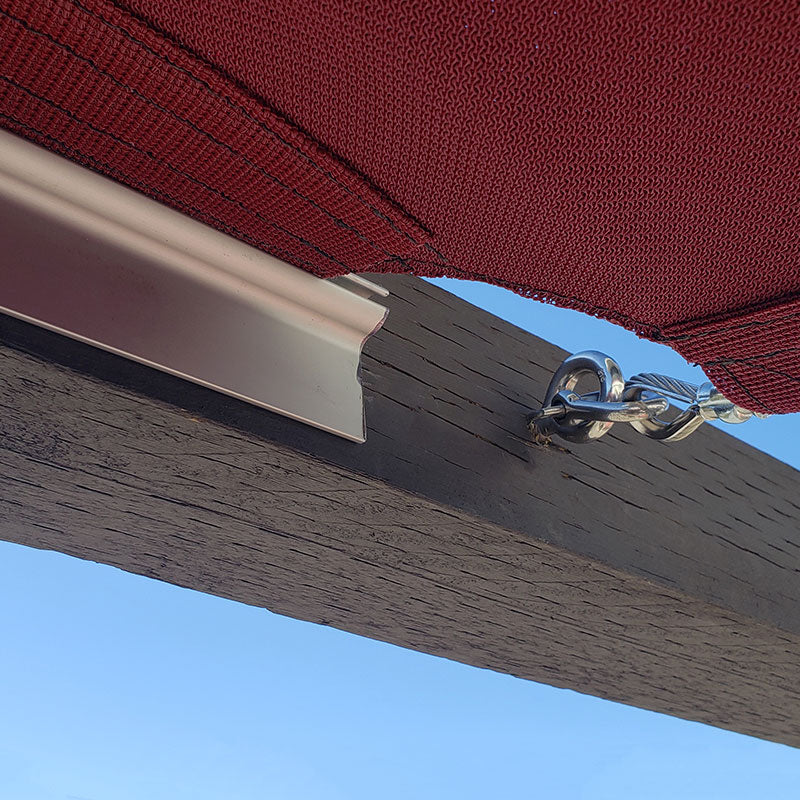

Brick Anchor Point
A brick anchor point is used where you have a facade (usually a brick facade, hence the name) overlaying a structural stud. It is made of three parts:
- Threaded Rod with Welded Eye
- Transition Piece
- Lag Screw
To use a brick anchor, you need to locate a substantial piece of wood behind your facade. Drill through the brick facade until you reach the stud then use the lag screw to secure your anchor. When cut to the correct length, your through bolt and welded eye will sit on the outside of the brick facade and will provide you with a secure and visually appealing anchor point.
Welded Screw Eyes
A welded screw eye is similar to a brick anchor point in that there is a screw on one end and a welded eye on the other, however, you would only use a welded screw eye where you are screwing directly into wood. In terms of existing structures, screw eyes are commonly used in roof attachments or on structures with bare wood showing.
Through Bolt with Welded Eye
Your final option for attaching to a house or existing structure is a through bolt and welded eye. You would use this piece of hardware where you have substantial brick or mortar that can provide a strong enough anchor to support the tension of a shade sail. In this case, you would drill into the brick and use epoxy to secure the through-bolt—the product comes with nuts and washers, which you can discard if using it for this application.
Posts
Where you can’t attach to an existing structure, you will need to install a post. The installation of posts is beyond the scope of this tutorial, however, you can find an instructional video on our youtube page. There are many cases where one side of your shade sail (two anchor points) will attach to an existing structure and the other two anchor points are created with posts. In other cases, all of the anchor points are created with posts, if you have any questions please contact us. Posts come in two main materials; wood or steel (metals such as aluminium can also be used but are less common), the hardware you can use with your post will depend on the material.

Through Bolt with Welded Eye
This is by far the most common piece of anchor point hardware used for posts and can be used for both wood and steel. If you’re using a metal post, a through bolt and welded eye is pretty much your only option. If you’re using wood, there are other options but a through bolt and welded eye is the most common solution. To use a through bolt and welded eye on a post, drill through your post, insert your bolt through the hole and use the provided nuts and washers to secure at the other end.

Welded Screw Eyes
For wooden posts, you can also use a welded screw eye. Instead of drilling through the post, you can use a screw eye to screw directly into your post. We always recommend through bolts for larger shade sails as they are more secure, however, if you have a smaller shade sail a welded screw eye will do just fine.
Diagonal Wall Plate
Again, this is much less common than a through bolt with welded eye or a welded screw eye but a diagonal wall plate can be used in some circumstances to anchor your shade sail to a post. Some people prefer the appearance of a diagonal wall plate if they have used the same hardware to attach to their house or other structure but all of these options will work fine.

External Corner Bracket
Finally, an external corner bracket can be used if you would like to create an anchor point on the corner of your post. This is unusual as the post can be positioned correctly beforehand but in the case of an existing post or if you are attaching multiple sails to one post and this is the only angle, an external corner bracket can be used.
Frames
The advantage of a frame is that you can dissipate the force from tensioning the shade sail, reducing the need for substantial footings. Frames can be used for both a single side of the shade sail or used on all sides to create a pergola structure. In terms of hardware, frames are very similar to posts; the vast majority of frames are made out of wood so all of the hardware listed above for posts can be used on your frame too. If you’d like to discuss the use of a frame or you have any further questions, please contact us any time.
Conclusion: Anchor Points Matter
Choosing the right anchor points is essential for a safe and effective shade sail installation. Whether you're working with existing structures, posts, or custom frames, the stability of your anchors directly affects performance, weather resistance, and longevity. For the best results, always ensure your hardware is installed securely—and when in doubt, consult a professional to make sure your setup is built to last.


